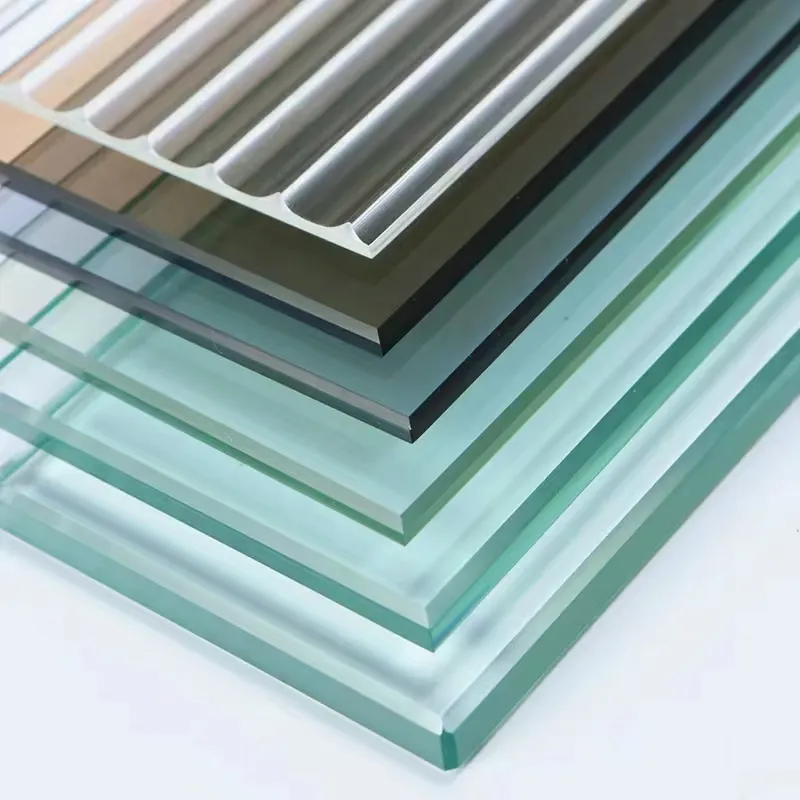Understanding Clear Annealed Float Glass
Clear annealed float glass is a fundamental building material renowned for its clarity, versatility, and durability. As an integral component in various architectural and industrial applications, it plays a crucial role in modern construction and design. This article delves into the properties, production process, applications, and benefits of clear annealed float glass, shedding light on why it remains a staple in various industries.
What is Clear Annealed Float Glass?
Clear annealed float glass is manufactured through the float glass process, which involves floating molten glass on top of molten tin. This method yields a flat and even surface, resulting in glass of exceptional clarity with minimal distortion. The term annealed refers to the heat treatment process that the glass undergoes after being formed. This process allows the glass to cool slowly, relieving internal stresses and ensuring uniform thickness. The result is a product that is both aesthetically pleasing and structurally reliable.
Properties of Clear Annealed Float Glass
One of the most notable characteristics of clear annealed float glass is its outstanding optical clarity. It offers high light transmission rates and low levels of distortion, making it ideal for applications where visibility is paramount. Additionally, clear float glass has a smooth surface that enhances its transparency, making it a preferred choice for windows, facades, and display cases.
The physical properties of the glass also make it a robust option for various environments. Clear annealed float glass is resistant to environmental stresses, including humidity and temperature fluctuations. When properly handled and installed, it can endure significant pressure and impacts, although it is not as strong as tempered or laminated glass, which are specifically designed for high-stress applications.
The Production Process
The production of clear annealed float glass begins with the melting of raw materials, primarily silica sand, soda ash, and limestone, at high temperatures in a furnace. Once the materials are melted, the molten glass is poured onto a bed of molten tin, where it spreads out to form a uniform thickness. The glass floats on the tin, allowing for the creation of perfectly flat sheets.
Subsequently, the glass is slowly cooled in a controlled environment, a process known as annealing. This step is crucial, as it prevents internal stresses that could lead to breakage. After annealing, the glass is cut into various sizes based on the specific needs of customers. It may also undergo additional processes like polishing or coating, depending on its intended use.
clear annealed float glass
Applications of Clear Annealed Float Glass
The versatility of clear annealed float glass allows it to be used across a broad spectrum of applications. In the architectural domain, it is commonly utilized for windows, glass doors, and curtain walls, offering unobstructed views and natural light. Furthermore, its aesthetic appeal makes it a popular choice for interior applications like glass partitions and shower enclosures.
In the automotive industry, clear float glass is used for windshields, sidelites, and rear windows, where safety and visibility are crucial. The glass is also widely employed in the manufacture of furniture, such as tabletops and shelving, where its sleek look enhances the overall design.
Additionally, clear annealed float glass has a substantial presence in the packaging industry. It is used for producing jars and bottles, providing a safe and aesthetically pleasing way to package food and beverages.
Benefits of Using Clear Annealed Float Glass
The choice of clear annealed float glass comes with numerous benefits. Its high clarity and light transmission make spaces feel open and bright while enhancing aesthetic appeal. Moreover, the ease of fabrication allows manufacturers to create various shapes and sizes, catering to diverse design needs.
Another significant advantage is the glass's ability to be recycled. As a sustainable material, clear annealed float glass can be melted down and reformed into new glass products, reducing waste and minimizing environmental impact.
Conclusion
Clear annealed float glass remains an essential material in contemporary architecture and design. Its unique combination of clarity, strength, and versatility makes it suitable for a myriad of applications, from windows to furniture. As industries evolve and the demand for innovative materials grows, clear annealed float glass is poised to remain a cornerstone in construction and design for years to come. Whether in residential, commercial, or industrial contexts, this glass not only meets functional requirements but also adds to the beauty and integrity of the built environment.
 Afrikaans
Afrikaans  Albanian
Albanian  Amharic
Amharic  Arabic
Arabic  Armenian
Armenian  Azerbaijani
Azerbaijani  Basque
Basque  Belarusian
Belarusian  Bengali
Bengali  Bosnian
Bosnian  Bulgarian
Bulgarian  Catalan
Catalan  Cebuano
Cebuano  Corsican
Corsican  Croatian
Croatian  Czech
Czech  Danish
Danish  Dutch
Dutch  English
English  Esperanto
Esperanto  Estonian
Estonian  Finnish
Finnish  French
French  Frisian
Frisian  Galician
Galician  Georgian
Georgian  German
German  Greek
Greek  Gujarati
Gujarati  Haitian Creole
Haitian Creole  hausa
hausa  hawaiian
hawaiian  Hebrew
Hebrew  Hindi
Hindi  Miao
Miao  Hungarian
Hungarian  Icelandic
Icelandic  igbo
igbo  Indonesian
Indonesian  irish
irish  Italian
Italian  Japanese
Japanese  Javanese
Javanese  Kannada
Kannada  kazakh
kazakh  Khmer
Khmer  Rwandese
Rwandese  Korean
Korean  Kurdish
Kurdish  Kyrgyz
Kyrgyz  Lao
Lao  Latin
Latin  Latvian
Latvian  Lithuanian
Lithuanian  Luxembourgish
Luxembourgish  Macedonian
Macedonian  Malgashi
Malgashi  Malay
Malay  Malayalam
Malayalam  Maltese
Maltese  Maori
Maori  Marathi
Marathi  Mongolian
Mongolian  Myanmar
Myanmar  Nepali
Nepali  Norwegian
Norwegian  Norwegian
Norwegian  Occitan
Occitan  Pashto
Pashto  Persian
Persian  Polish
Polish  Portuguese
Portuguese  Punjabi
Punjabi  Romanian
Romanian  Russian
Russian  Samoan
Samoan  Scottish Gaelic
Scottish Gaelic  Serbian
Serbian  Sesotho
Sesotho  Shona
Shona  Sindhi
Sindhi  Sinhala
Sinhala  Slovak
Slovak  Slovenian
Slovenian  Somali
Somali  Spanish
Spanish  Sundanese
Sundanese  Swahili
Swahili  Swedish
Swedish  Tagalog
Tagalog  Tajik
Tajik  Tamil
Tamil  Tatar
Tatar  Telugu
Telugu  Thai
Thai  Turkish
Turkish  Turkmen
Turkmen  Ukrainian
Ukrainian  Urdu
Urdu  Uighur
Uighur  Uzbek
Uzbek  Vietnamese
Vietnamese  Welsh
Welsh  Bantu
Bantu  Yiddish
Yiddish  Yoruba
Yoruba  Zulu
Zulu 

